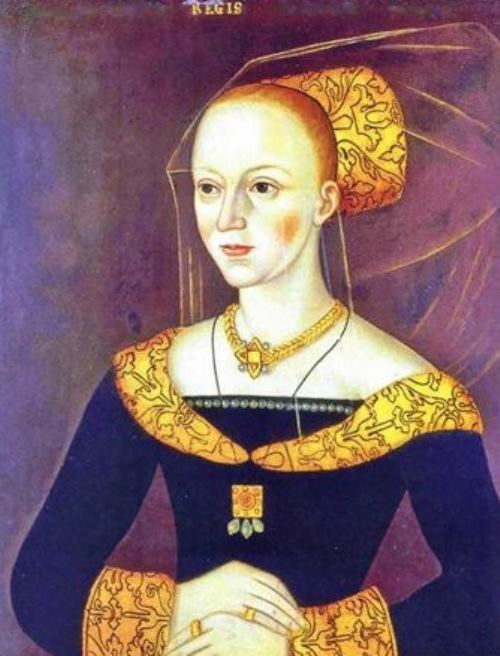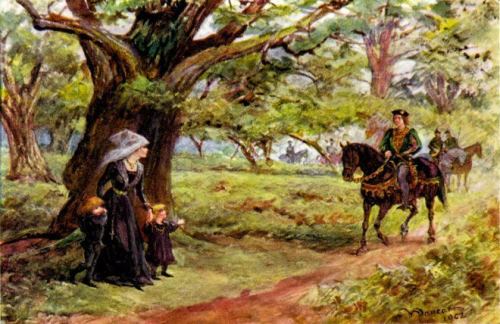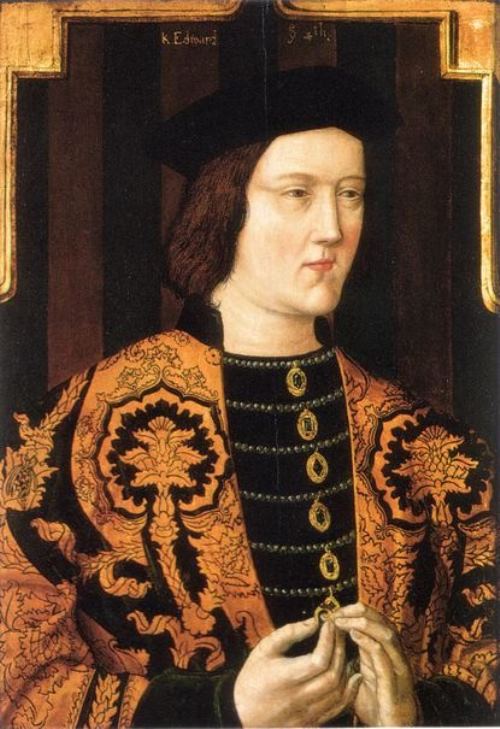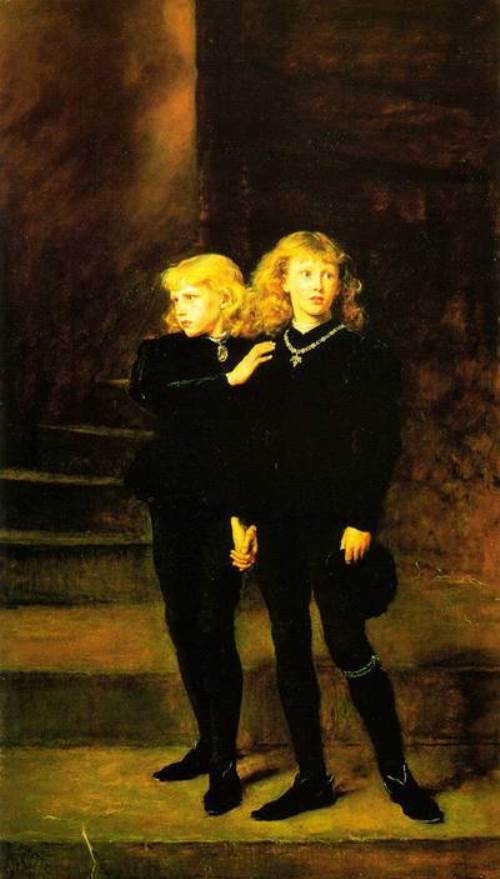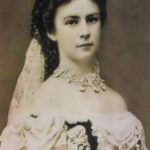Elizabeth Woodville united two warring dynasties
Nothing prevented Elizabeth Woodville from being happy but her high position. The gloomy XV century, in which she happened to live, did not dispose to sincere manifestations of feelings. And the tangle of intrigue and war in which Elizabeth’s life took place turned her days into hell, full of anxiety, loss and suspicion.
At first fate generously gifted the woman, and then brutally robbed her. Neither natural beauty, nor wealth, nor high position, nor piety could make her happy.
Elizabeth inherited a thirst for sincere feelings and true passion from her mother, Jacquetta of Luxembourg. She was married twice. John Lancaster, the son of the English king Henry IV, was her first husband. This marriage was a purely political union, which lasted about two years and did not bring children. But immediately after this, Jacquetta fell in love with the chamberlain of her first husband – not too noble knight Richard Woodville. This was love at first sight. But the relatives of the first husband and especially King Henry VI (nephew of John Lancaster) reacted sharply negative. It was a misalliance. Woodville even had to pay a fine of one thousand pounds. However, then the king relented, and the money was returned to the happy couple.
In this marriage, 14 children were born. Elizabeth, born in 1437, was the oldest. When she grew up, a civil war broke out in England – the Scarlet and White Rose War. Scarlet Rose has become the emblem of the Lancaster family. And the Duke Richard of York chose a white rose as his emblem. Elizabeth’s parents, despite the insufficiently noble origin of her father, were at the court of King Henry VI of Lancaster.
All contemporaries noted the extraordinary beauty of Elizabeth. Some even called her the most beautiful woman in Britain. It was a cold northern charm. Woodville was distinguished by white radiant skin and blond hair.
Elizabeth was married to the more than wealthy knight John Gray. The married couple was happy. They had two sons. But the time in which these people lived could not but intervene in their quiet family life. In 1461, John Gray, an ardent supporter of the Lancaster, died at the Battle of St. Albans. After the death of the head of the family, the victorious Yorkist confiscated all the property of the Grays.
And then the woman, driven to despair, decided on a real adventure. Until now, historians argue about whether this is a legend or a historical reality. Mrs. Gray inquired about the crowned King Edward IV.
Elizabeth took her young sons and went to the forest, where the newly-made monarch often appeared. Mother and children stopped under the oak, waiting for the king. Edward, returning from hunting, was completely dumbfounded when he saw a beautiful blond woman with two lovely boys under a huge tree. This plot formed the basis of the paintings.
The king fell in love with the widow of his enemy at first sight. He, of course, invited Elizabeth to become his mistress. The monarch had no doubt: a woman who lost her spouse and wealth would gladly fall into his arms. To the great surprise of Edward, Elizabeth refused him! She did not want to be another “victim” in the list of favorites of the monarch. To the surprise of the court, the king, astounded by the piety of the poor widow, made her a marriage proposal, which she gladly accepted. This marriage, like the wedding of Elizabeth’s parents, brought the court into a state of shock. The marriage had to be kept secret for the first time in order to avoid scandal.
However, the newlywed did not annoy anyone: she was pious and charming. What could not be said about her greedy and arrogant relatives, who instantly crowded around the throne.
Many Yorkist’s supporters were outraged when Edward’s new relatives began to push them from their honorable posts. The former allies went over to Lancaster and started a new war with the king. They managed to defeat the troops loyal to him. The monarch had to flee. And Henry VI of Lancaster took the throne again.
Elizabeth took refuge in Westminster Abbey. There in 1470 she gave birth to a boy whom she named Edward. Prior to that, three daughters were born in the family. And the monarch and his wife dreamed of the heir to the throne.
Oddly enough, the queen’s torment soon ended: in 1471, Edward IV defeated the Lancaster and was able to return to the throne. The next twelve years, he and Elizabeth spent in harmony and peace. They gave birth to ten children.
True, Edward’s mistress, Jane Shore, behaved impudently and licentiously at court. But Elizabeth knew how to close her eyes to many things. Moreover, she believed that her husband’s passion for other women did not diminish his feelings for her.
The happiness of Elizabeth collapsed for the second time in her life in 1483, when Edward suddenly died. The Woodville family did not have the strength and political influence to force a widow to be regent under the minor heir to the throne. He was declared King Edward V, but not crowned.
The place of the regent was taken by Richard, brother of Edward IV. Elizabeth was seized with chilling fear. She was well aware that Yorkist, who were hungry for power, regarded her and her children from Edward as annoying obstacles to the throne. In addition, the Woodville managed to spoil relations when Elizabeth was in power. Although the queen herself, who was forever pregnant, did not have much to do with the immoral behavior of her insolent relatives. But she perfectly understood: no one would forgive her for the sins of Woodville.
She was not mistaken – the reality exceeded her darkest expectations. In 1483 her sons from Edward – Edward V and Richard – were captured by supporters of the regent and thrown into the Tower. The boys were 12 and 9 years old. Since that fateful year, no one had seen the unfortunate sons of Elizabeth – neither alive nor dead.
Historians still speculate about where the Crown Prince and his brother went. However, it is not difficult to guess: the young Edward and Richard probably were not left alive. The fact is that even before the disappearance of the princes, Regent Richard Yorkist declared his brother’s children from Elizabeth illegal. He stated that Edward IV, before marrying the future queen, was engaged to another girl of aristocratic descent. And this made marriage with Woodville impossible. After the disappearance of the young princes, Richard III became the king of England without hindrance.
Elizabeth was hiding from a cruel brother-in-law in Westminster Abbey. Her friend Margaret Beaufort came to her. She invited the widow to marry her eldest daughter Elizabeth to her son – Henry Tudor. Woodville gladly agreed. Since Elizabeth’s daughter was the actual heiress of the house of York, this would reinforce the claim of Henry Tudor to the throne. After all, he was the great-great-great-grandson of King Edward III and the senior heir to the house of Lancaster. Thus, in this marriage, two rival clans were to be reconciled.
Henry Tudor defeated Richard III at the Battle of Bosworth in 1485. And he took the English throne under the name of Henry VII. After that, he married Elizabeth, daughter of Woodville. Thus ended the Scarlet and White Rose War.
The former queen was able to come out to the light of day again. But she could not find a common language with her son-in-law and quietly spent her last days in Bermondsey Abbey. She died there in 1492.
